During World War II, the glimpse most Americans got of the real war and the American combat soldier who fought it came through the cartoons of infantry Sgt. Bill Mauldin. Week after week, Mauldin defied Army censors and Gen. George Patton’s pledged to “throw his a** in jail” to deliver his wildly popular cartoon, ‘Upfront’ to the pages of Stars & Stripes and hundreds of newspapers back home.
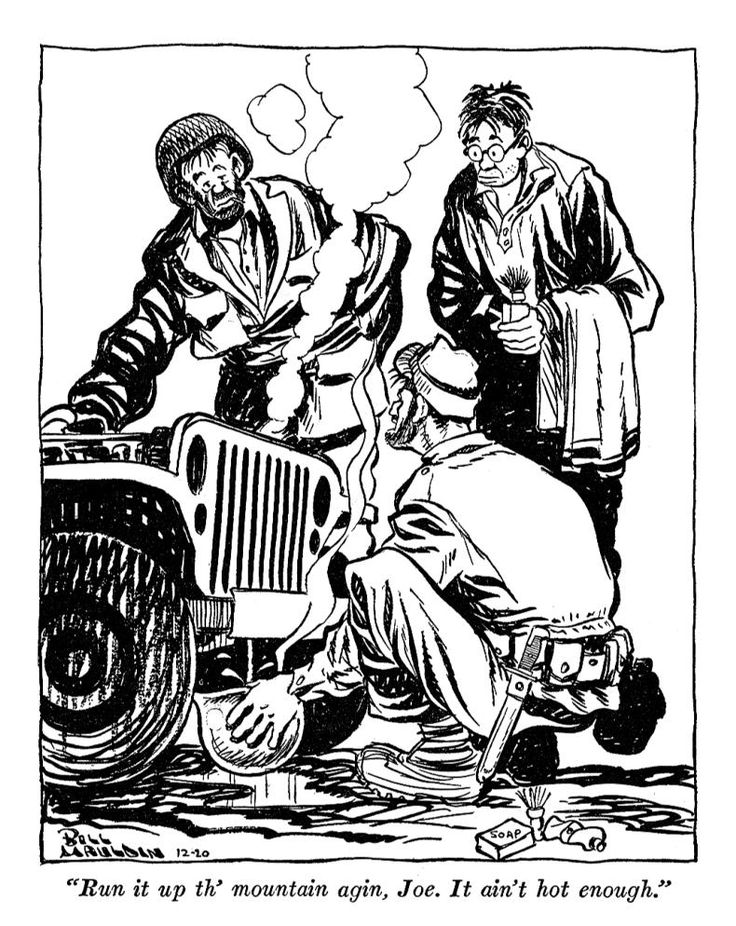
Bill Mauldin: The Voice of the Common Soldier
His cartoon character were Willie and Joe, two wisecracking unshaven dogfaces whose mud soaked uniforms and army slang and slum dialect bore eloquent witness to the world of combat and the men who lived-and died-in it.
To lowly foot soldiers, Mauldin gave voice to their dreams, fears, and grievances of at a time when the official spotlight shown on glamorous flyers and gung ho island-hopping marines. His over 600 wartime cartoons, half of which were sketched in combat, stand as both an authentic American masterpiece and an essential chronicle of Americans citizen soldiers from peace through war to victory.
Before he earned renown as a cartoonist, Mauldin was very much a combat soldier: first in the Mediterranean with the 45th Infantry Division, and later in the European Theater of Operations, where he roamed the front lines to gain ideas and inspiration for his cartoons. He was also wounded by shrapnel from a German mortar in Italy in 1943.
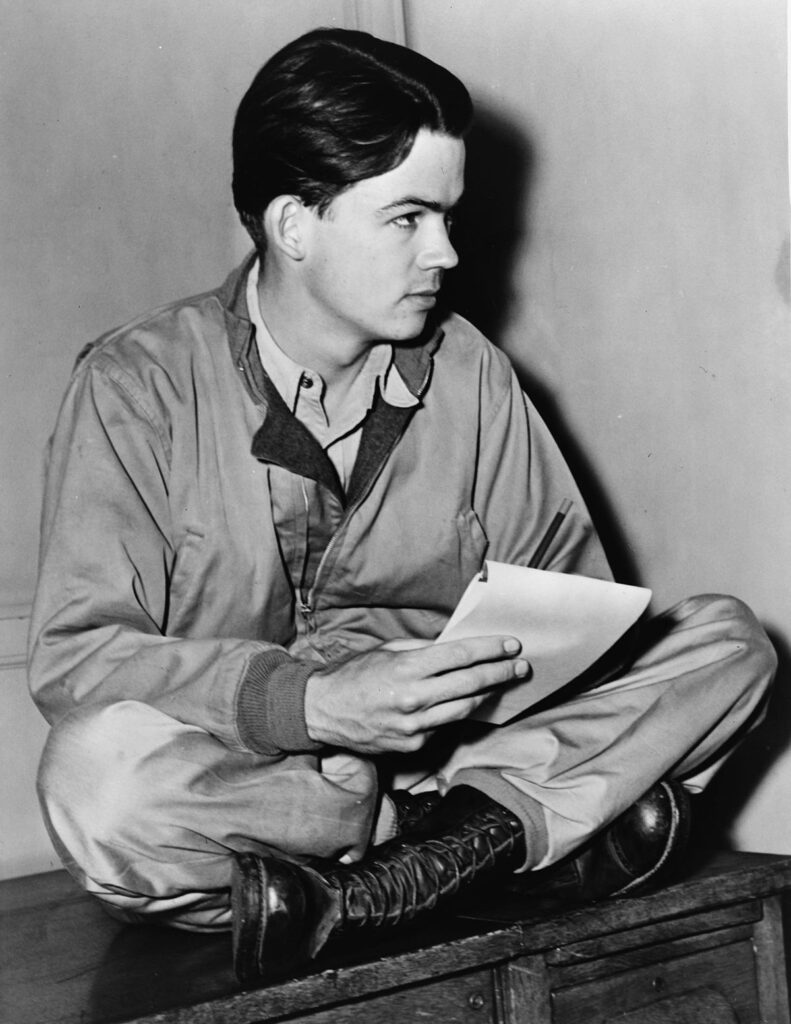
Bill Mauldin vs. Gen. Patton: A Clash of Perspectives
As Mauldin’s Willie and Joe cartoons grew in popularity, the young sergeant became a genuine hero to the GIs and their plight that he depicted so well. Although a number of senior officers thought Mauldin’s cartoons were bad for good order and discipline, the Army’s War Office not only supported their syndication for publishing in the United States, but also believed they were a good representation of how tough a war the nation was fighting. Mauldin has one very famous, vocal, high placed distractor: Gen. George S. Patton.
Patton’s insistence on discipline as a key to the survival of his troops on the battlefield, strongly dislike Mauldin’s archetypal GI characters. It was during the Sicily campaign in the summer of 1943 that Patton began complaining about Mauldin’s unsparing cartoons, which often made fun of the brass or the military police. His displeasure often launched Patton into a tirade about “those G**D** things you call soldiers,” insisting Mauldin’s Willie and Joe made American soldiers look “like G**D*** bums.”
Patton, never known for having a sense of humor, demanded that the division commander, Maj. Gen. Troy Middleton, “get rid of Mauldin and his cartoons.” Middleton, who knew Patton well and had a good relationship with him, replied diplomatically: “Put your order in writing, George.”
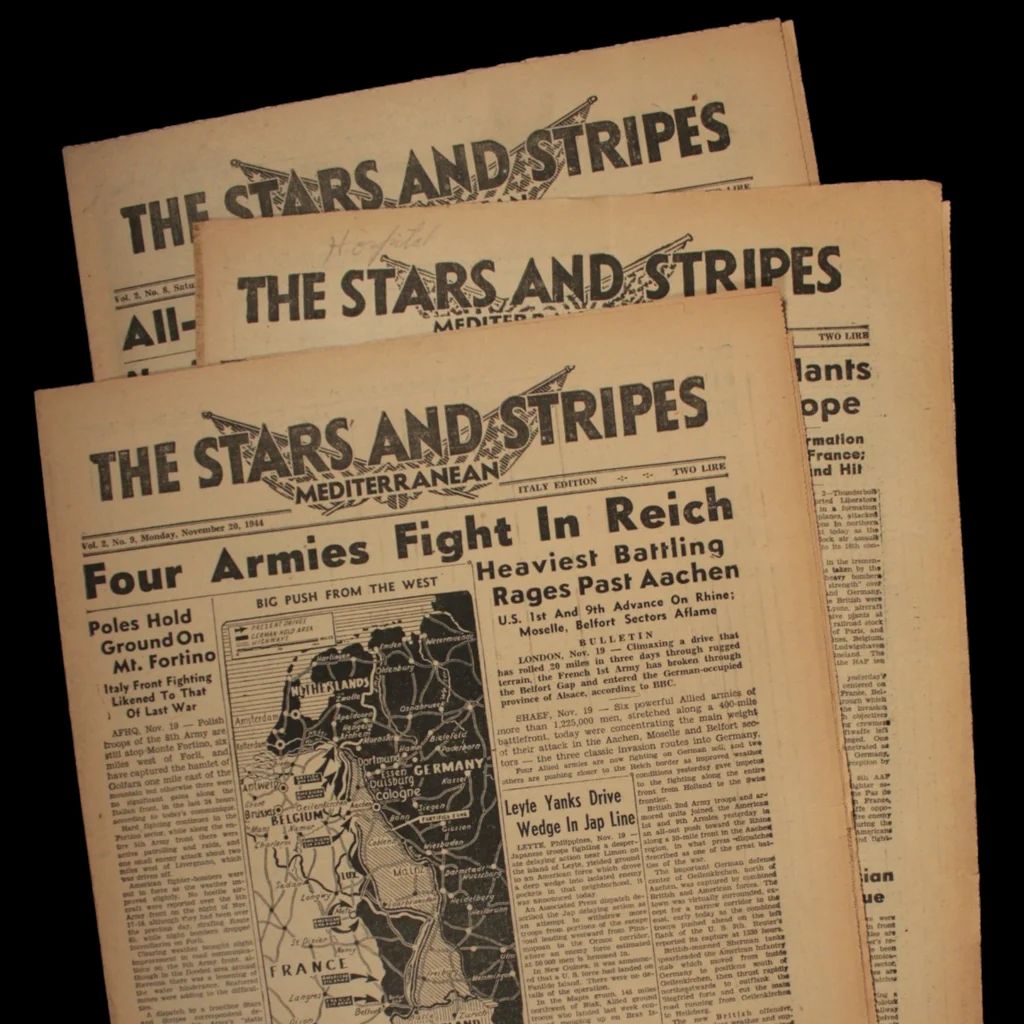
As Mauldin’s cartoons began appearing almost daily, Patton angrily began referring to the Stars and Stripes as a “scurrilous sheet” that subverted discipline. After he complained officially about Mauldin’s “goddamned cartoons,” Eisenhower’s naval aide and confidant, Captain Harry Butcher, suggested a meeting between the two might defuse the situation. After thundering that, “if that little S.O.B. sets foot in Third Army I’ll throw his a** in jail,” Patton relented.
On the day of their meeting in December 1944 during the Battle of the Bulge, an understandably frightened Bill Mauldin arrived at Third Army HQ convinced he had been sent on “a suicide mission.” The meeting between twenty-three year old, baby-faced cartoonist and the profane general turned out to be an epic encounter.
Mauldin gave Patton his best parade ground salute, and Patton rose to offer his hand, telling Mauldin to sit. Mauldin recounted later that Patton’s collar and shoulders glittered with more stars than he could count, his fingers sparkled with rings, and an incredible mass of ribbons started around desktop level and spread upward in a flood over his chest to the very top of his shoulder. His face was rugged, with an odd, strangely shapeless outline; his eyes were pale, almost colorless, with a choleric bulge.
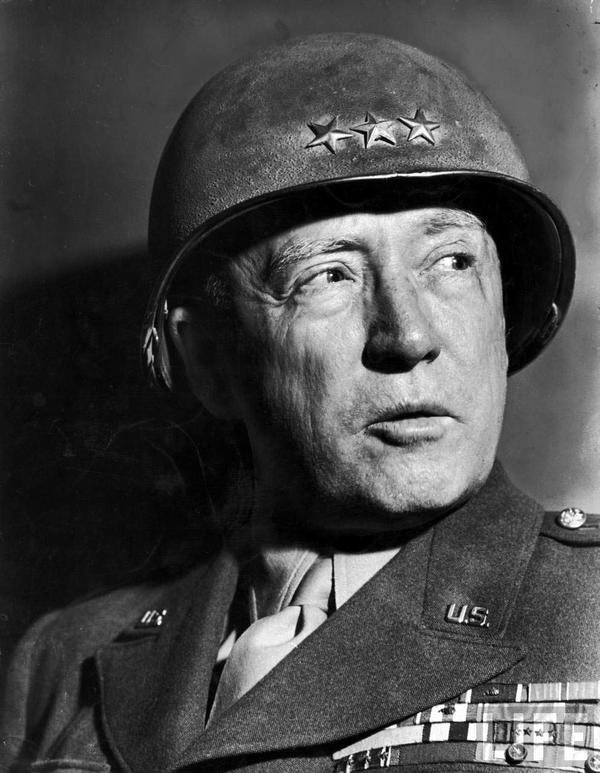
Patton belittled Mauldin right from the beginning of their meeting. He hated the way Willie and Joe looked. Scruffy. Disheveled. He contrasted that slovenly look with his clean-shaven, boots polished, neckties wearing Third Army troops. The longer he spoke, the greater Patton’s ire became. He demanded: “What are you trying to do, incite a G**D*** mutiny?”
Waving a batch of Mauldin’s cartoons, Patton complained that he was ruining morale: “The Krauts ought to put a medal on you.”
Patton then launched into a lengthy dissertation about armies and leaders of the past, of rank and its importance. To Mauldin, Patton’s monologue seemed to encompass four thousand years of military history. The meeting, which consisted primarily of Patton’s monologue, went on for about forty-five minutes. In all, Mauldin was given less than two minutes to present his own views.
When the two parted, agreeing to disagree, Patton said: “You can’t run an army like a mob … All right, Sergeant, I guess we understand each other now.”
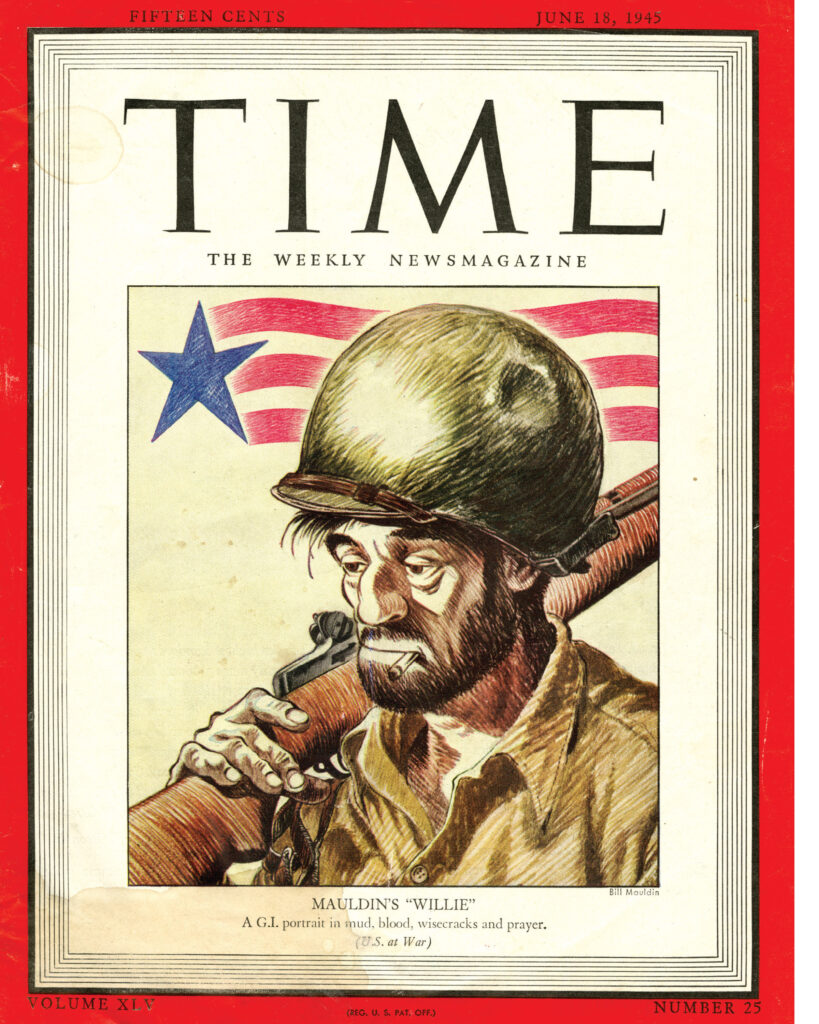
It was inevitable, of course, that Mauldin and Patton would never see eye-to-eye. In his postwar book, “The Brass Ring,” Mauldin noted that despite what Patton thought, he was neither anti-officer nor against discipline: “If you’re a leader, you don’t push wet spaghetti, you pull it. The U.S. Army still has to learn that. The British understand it. Patton understood it. I always admired Patton. Oh, sure, the stupid b****** was crazy. He was insane. He thought he was living in the Dark Ages. Soldiers were peasants to him. I didn’t like that attitude, but I certainly respected his theories and the techniques he used to get his men out of their foxholes.”
Bill Mauldin’s Legacy: The Last Word in a War of Ideas
In the end, it was Mauldin who had the last word after his great encounter with George S. Patton. In 1945 he won a Pulitzer Prize, and Willie (the soldier) appeared on the cover of Time, leaving Patton sputtering over Bill Mauldin’s “G**D**** bums.”
In the summer and fall of 2002, the dying eighty-year-old cartoonist was bedridden in the Park Superior nursing home in Newport Beach, California. His body had been ravaged by subsequent infections and his mind by dementia.
Nearly every day aging foot soldiers came to pay homage to their dying hero, some bearing relics of their youth: medals, insignia, faded photographs and yellowing newspaper clippings. Most wept as they filed down the corridor leading to Mauldin’s room. They were making the pilgrimage to let Mauldin know how much they meant to him and that he had not been forgotten.
Those too infirmed to make the trip, wrote Mauldin letters and sent him postcards all bearing witness to how the cartoonist had save their soul during the war and how the humor kept their humanity alive amid the slaughter. Widows thanked him for comforting their husbands before they were killed in battle.
Even today Mauldin’s cartoons hold a hidden transcript not only of war but of trauma and premature wisdom and responsibility.
Read About Other Military Myths and Legends
If you enjoyed learning about Sgt Bill Mauldin, we invite you to read about other military myths and legends on our blog. You will also find military book reviews, veterans’ service reflections, famous military units and more on the TogetherWeServed.com blog. If you are a veteran, find your military buddies, view historic boot camp photos, build a printable military service plaque, and more on TogetherWeServed.com today.
I am a Veteran. Served a single enlistment of 4 years as a Hospital Corpsman (HM3) I am not embarrassed, nor ashamed of my military background, but an overwhelming feeling of GUILT, that I did not do enough. I served honorably, proudly, and was relesed with an Honorable Discharge. But, I have no combat experience. I enlisted in 1956 until 1960, and the world was relatively calm. Only one minor incident in Lebanon, that posed a possibility of some kind of action. I did not happen…….to me.
I was fresh out of high school, with no goals in mind. I had no family background that taught me anything about ambition and/or goals in life. These are facts I learned later in life, while wondering WHY my life was mediocre at best.
At the time of my release from active duty, there was no “pep talk” about reenlistment or career plans, and I never questioned that. My older brother, from whom I was separated when I was 3 years old, was a career CPO, on recruit duty at the time my release was due. Not blaming him. It seemed ironic, later in life.
So, as I terminated my military obligation, I left with NO GOALS in mind, once again. Still unaware of the meaning of ambition and life goals. In fact, I never imagined I would live 87 + years, so far.
Ten or twelve years ago, I somehow, reconnected with 4 shipmates I had not contacted with since 1958. To my utter surprise and astonishment, I discovered each of those men were 20 plus years career Navy men. Three retired SCPOs and one, retired as a LtCdr. in the Medical service corps. That humbled me to the bone! I was proud to be their “brother.” At the same time feeling that guilt all the more. Wondering WHY didn’t I see the future. I believe 3 of those 4 paid the ultimate price of being combat corpsmen in Vietnam. The LtCdr. is still alive today.
I wish I was more deserving to be buried in the local National Cemetery. How do I overcome that guilt?